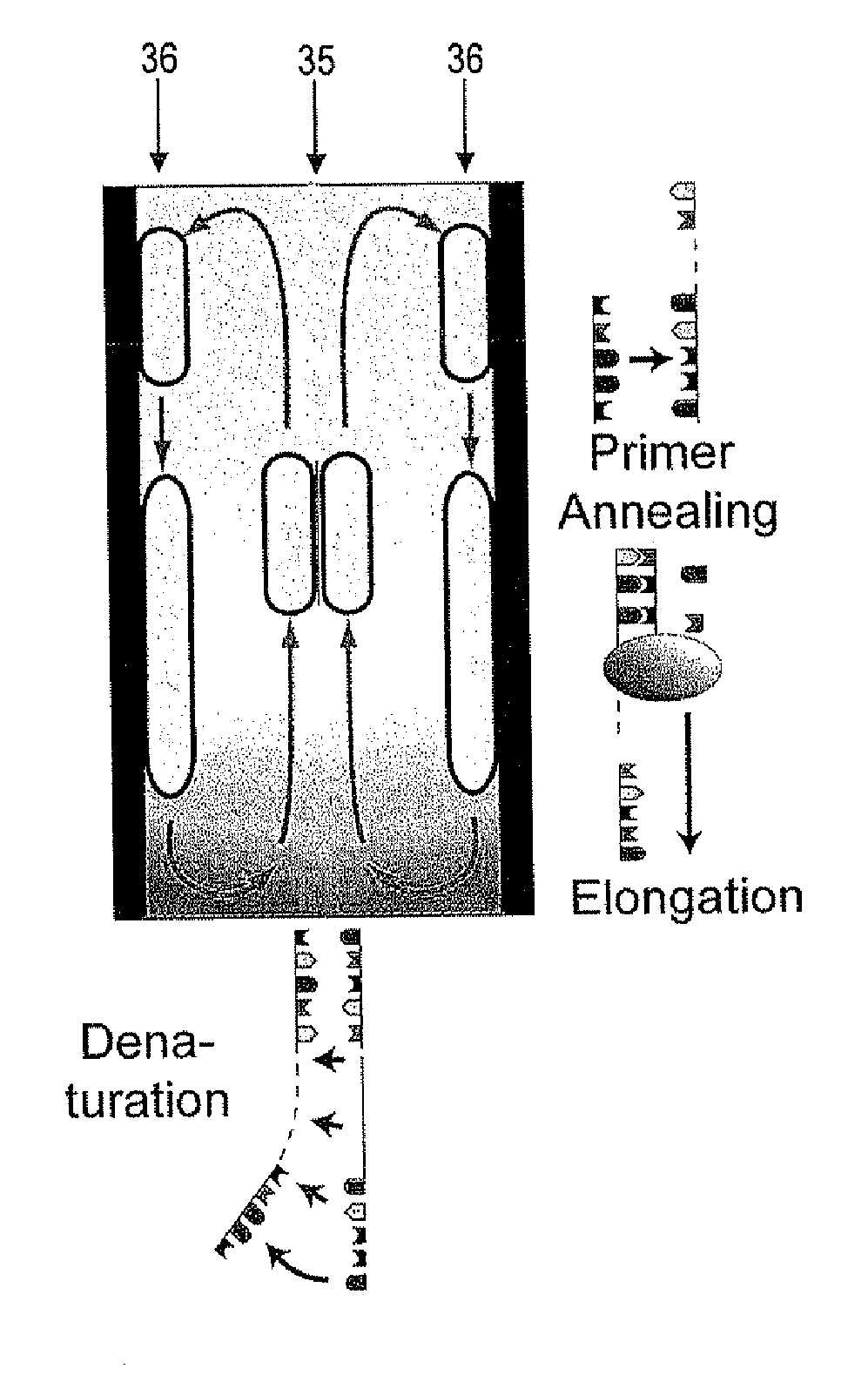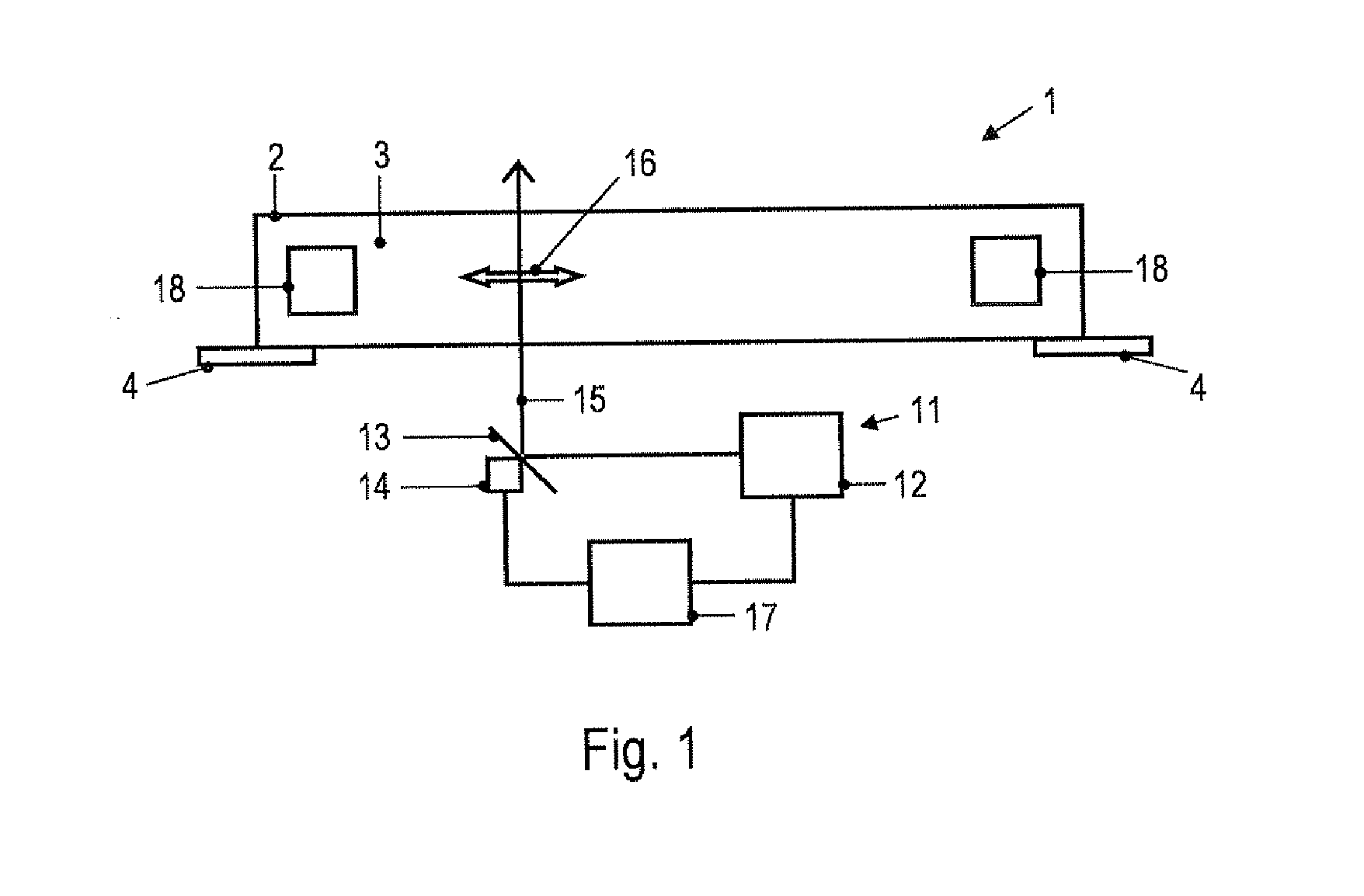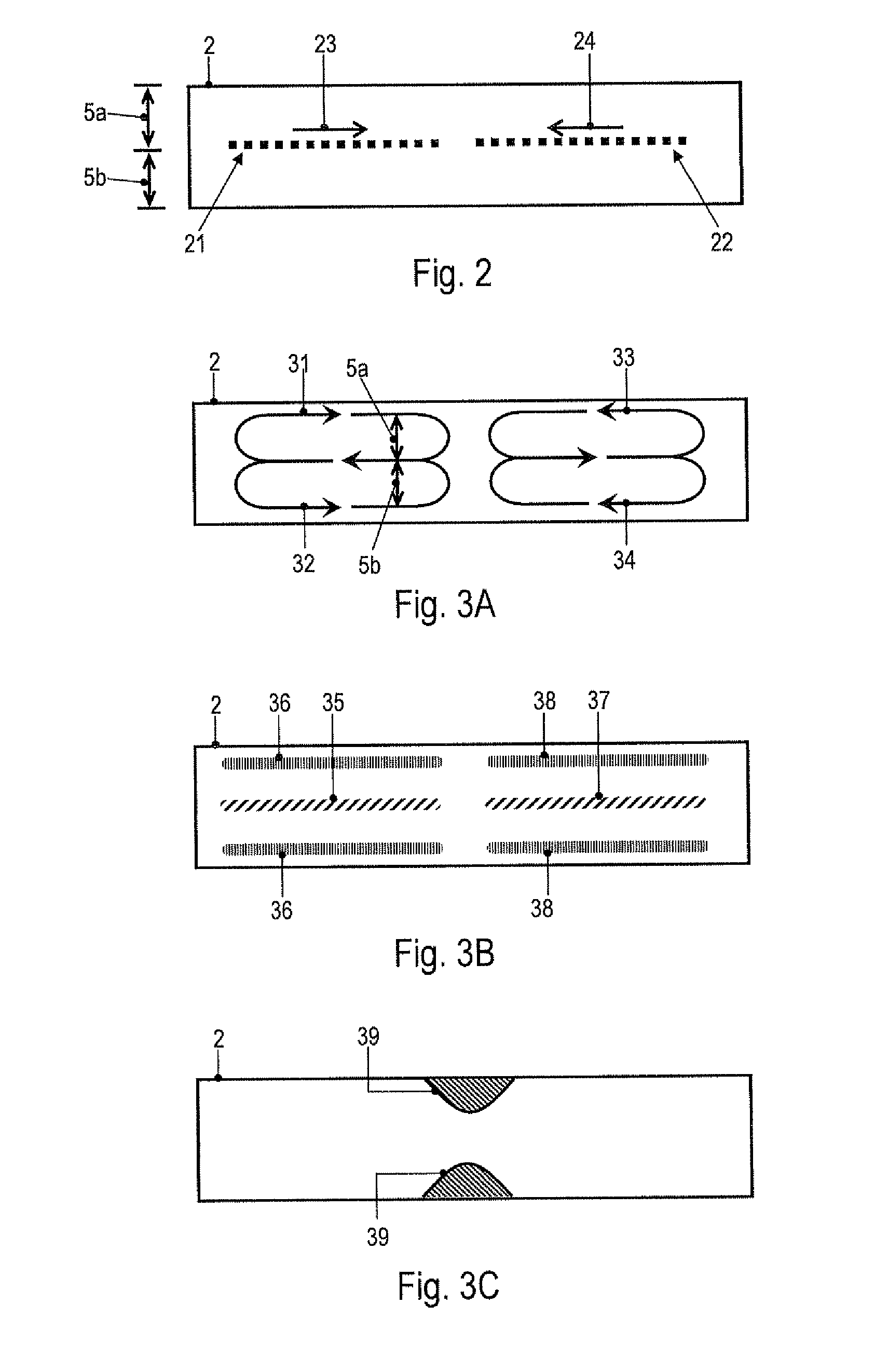Method and Apparatus for Amplifying Nucleic Acid Sequences
- Summary
- Abstract
- Description
- Claims
- Application Information
AI Technical Summary
Benefits of technology
Problems solved by technology
Method used
Image
Examples
Embodiment Construction
[0052]In embodiments of the invention, a fluid flow is established in the PCR buffer solution by supplying heating power to the PCR buffer solution at a plurality of positions in a time-varying manner, i.e., by using a spatio-temporally varying heating. This mechanism drives fluid flow and allows the velocity of the fluid flow within the vessel to be adjusted. It has been surprisingly found that adjusting the velocity of the fluid flow within the vessel may be used to generate and control a local concentration increase of molecules or particles in the PCR buffer solution. The mechanism is selective in the sense that, for a given velocity of the fluid flow, the obtained concentration changes are more pronounced for one type of molecules, complexes or particles than for other types of molecules, complexes or particles. It is noted that the term “selective” does not preclude that more than one type of molecules, complexes or particles is accumulated in a region of the vessel. Moreover,...
PUM
| Property | Measurement | Unit |
|---|---|---|
| Temperature | aaaaa | aaaaa |
| Flow rate | aaaaa | aaaaa |
| Ratio | aaaaa | aaaaa |
Abstract
Description
Claims
Application Information
 Login to View More
Login to View More - R&D
- Intellectual Property
- Life Sciences
- Materials
- Tech Scout
- Unparalleled Data Quality
- Higher Quality Content
- 60% Fewer Hallucinations
Browse by: Latest US Patents, China's latest patents, Technical Efficacy Thesaurus, Application Domain, Technology Topic, Popular Technical Reports.
© 2025 PatSnap. All rights reserved.Legal|Privacy policy|Modern Slavery Act Transparency Statement|Sitemap|About US| Contact US: help@patsnap.com



